Syrup of Pomegranates
34.
And a third and final recipe inspired by this month’s Montengarde Culinary Group’s meeting.
While looking for a “light” recipe or one that made me think of warmer climates I decided on Andalusia. Southern Spain sounded warm to me and during the time period it would have been very exotic as well, being one of the main connecting points for Muslim Africa and Christian Europe.
This recipe was chosen mostly for my son who has decided that he loves pomegranates (pomegranate candy as he calls it).
Today’s recipe is from An Anonymous Andalusian Cookbook of the 13th Century as translated by Charles Perry. The cookbook is originally known as Kitab al-Tabeekh fi ‘l-Maghrib wa ‘l-Andalus fi ‘Asr al-Muwahhidin or Cookbook of Al-Maghrib and Andalusia in the era of Almohads (Writing Food History: A Global Perspective)
Syrup of Pomegranates
Take a ratl of sour pomegranates and another of sweet pomegranates, and add their juice to two ratls of sugar, cook all this until it takes the consistency of syrup, and keep until needed. Its benefits: it is useful for fevers, and cuts the thirst, it benefits bilious fevers and lightens the body gently.
It’s a fairly straightforward recipe. A few points need to be added though.

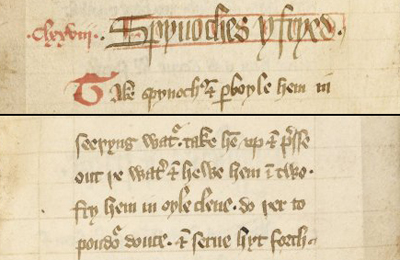
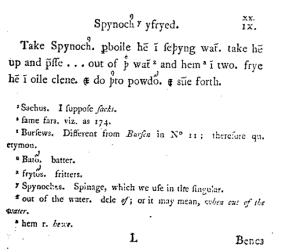
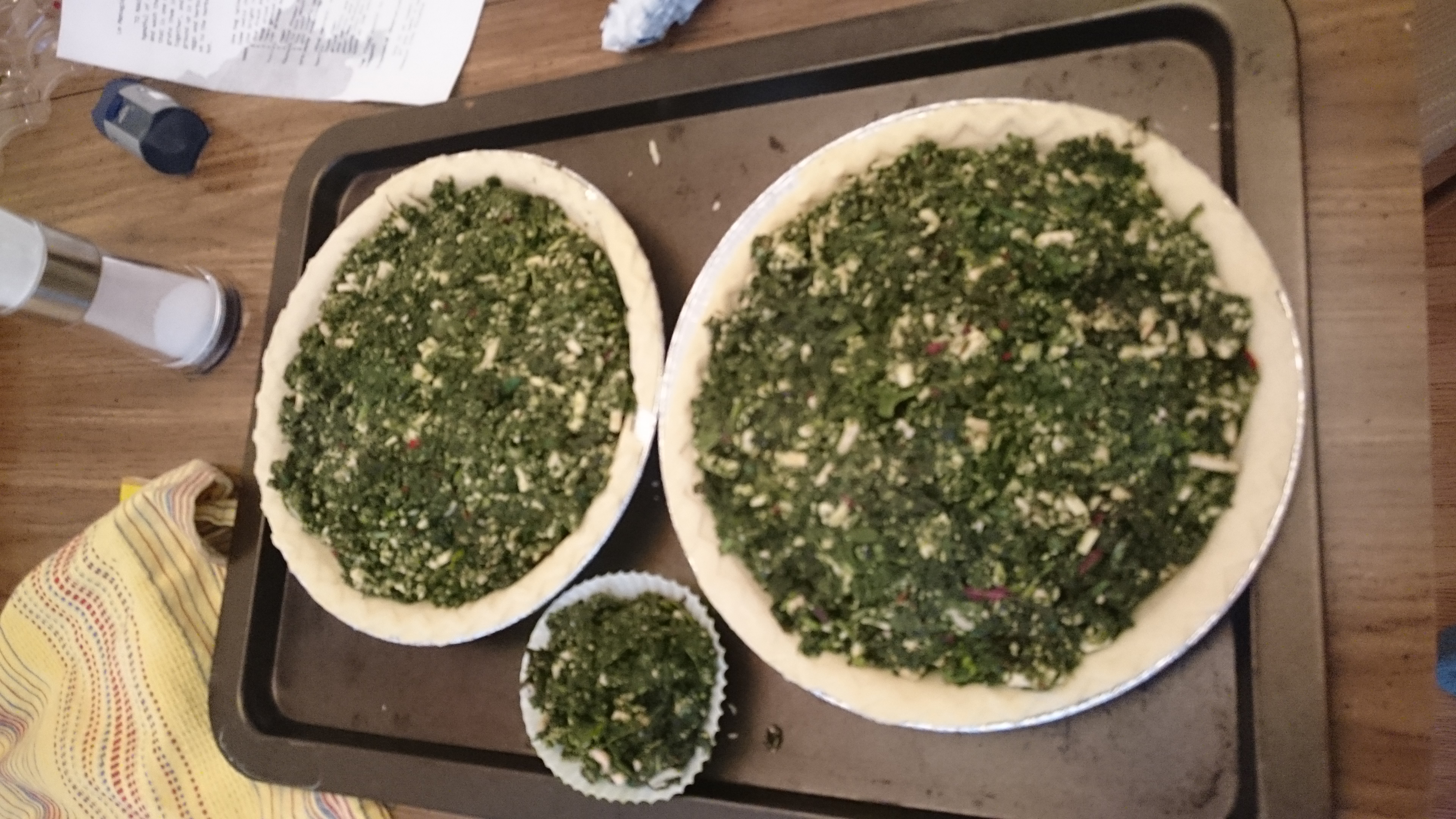


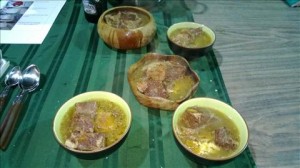
 your opponent is. To counteract the innate danger in this lunge you must be skillful, have practiced, and have good judgement, especially in knowing where your opponents weapon is. You must make your passing lunge as fast as possible, as soon as you see an opening with your opponents sword high you need to step forward with your left foot quickly, and parry your opponents weapon with your dagger, pushing it up and out of the way at the same time that you attack with your rapier. Your parry and attack must happen at the same time rather than as two actions or it will be too slow. The passing lunge is most effective if your opponent likes to stay in the same guard, but is more dangerous if he moves from guard to guard frequently.
your opponent is. To counteract the innate danger in this lunge you must be skillful, have practiced, and have good judgement, especially in knowing where your opponents weapon is. You must make your passing lunge as fast as possible, as soon as you see an opening with your opponents sword high you need to step forward with your left foot quickly, and parry your opponents weapon with your dagger, pushing it up and out of the way at the same time that you attack with your rapier. Your parry and attack must happen at the same time rather than as two actions or it will be too slow. The passing lunge is most effective if your opponent likes to stay in the same guard, but is more dangerous if he moves from guard to guard frequently.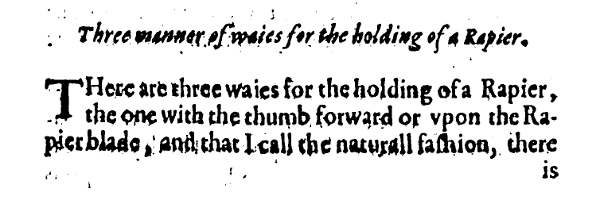 Swetnam tells us that there are three ways to hold a rapier.
Swetnam tells us that there are three ways to hold a rapier.
You must be logged in to post a comment.